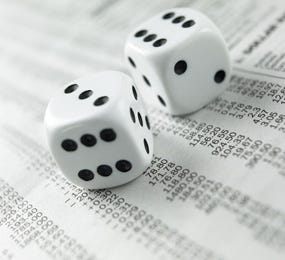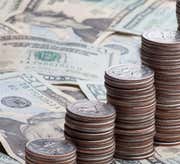|

|
The quick ratio, also known as the acid-test ratio, is a liquidity ratio that further refines the current ratio by measuring the level of the most liquid current assets available to cover current liabilities. The quick ratio is more conservative than the current ratio because it excludes inventory and other current assets, which generally are more difficult to turn into cash. A higher quick ratio means a more liquid current position.
The formula for calculating a company’s quick ratio is:
-
(Cash equivalents + marketable securities + accounts receivables) divided by current liabilities
Conservative version of current ratio
By focusing on the current assets that are generally the easiest to convert to cash, the quick ratio is conceivably a better barometer of the coverage provided by these assets for the company’s current liabilities should company experience financial difficulties.
Inventory is generally considered to be less liquid than these other current assets.
A rule of thumb is that a quick ratio greater than 1.0 means that a company is sufficiently able to meet its short-term obligations.
What it tells us
A low and/or decreasing quick ratio might be delivering several messages about a company. It could be telling us that the company’s balance sheet is over-leveraged. Or it could be saying the company’s sales are decreasing, the company is having a hard time collecting its account receivables or perhaps the company is paying its bills too quickly.
A company with a high and/or increasing quick ratio is likely experiencing revenue growth, collecting its accounts receivable and turning them into cash quickly and likely turning over its inventories quickly.
Factors unique to different companies and industries will also impact a company’s quick ratio, such as the timing of capital expenditures and other asset purchases, allowances for bad debt and other financial policies. When looking to use the quick ratio to compare companies, the most valid comparison is generally between companies in the same industry.
Not a perfect indicator
The elimination of inventories makes the quick ratio a somewhat better barometer of a company’s ability to meet its short-term obligations than the current ratio. But like the current ratio, the acid-test ratio is still not a perfect gauge. It is not realistic to assume that a company will liquidate all current assets that comprise the quick ratio to cover short-term debts since the company still needs a level of working capital to remain a going concern.
Liquidity Measurement Ratios: Cash Ratio
-
 Investing
InvestingUseful Balance Sheet Metrics
These metrics can help you better understand the information found on balance sheets. -
 Investing
InvestingHow to calculate the current ratio in Excel
Understand the basics of the current ratio, including its use in assessing a company's liquidity and learn how it is calculated in Microsoft Excel. -
 Investing
InvestingKey Financial Ratios to Analyze Biotech Companies
Explore the rapidly growing biotechnology industry, and learn some of the key financial ratios investors use to analyze companies in the industry. -
 Investing
Investing5 must-have metrics for value investors
In this article, we outline the five ratios that can help value investors find the most undervalued stocks in the market. -
 Investing
InvestingSXC Health Solutions Corp. (USA) Among the Nasdaq's Biggest Movers
The market is having a bad day so far: the Nasdaq is trading down 0.3%; the S&P 500 has declined 0.4%; and the Dow has slipped 0.5%. The Nasdaq Composite Index is a capitalization-weighted index, ... -
 Investing
InvestingWal-Mart's 5 Key Financial Ratios (WMT)
Identify the five key financial ratios that fundamental analysts use to evaluate Wal-Mart's (WMT) financial position to determine if it is a good buy.


